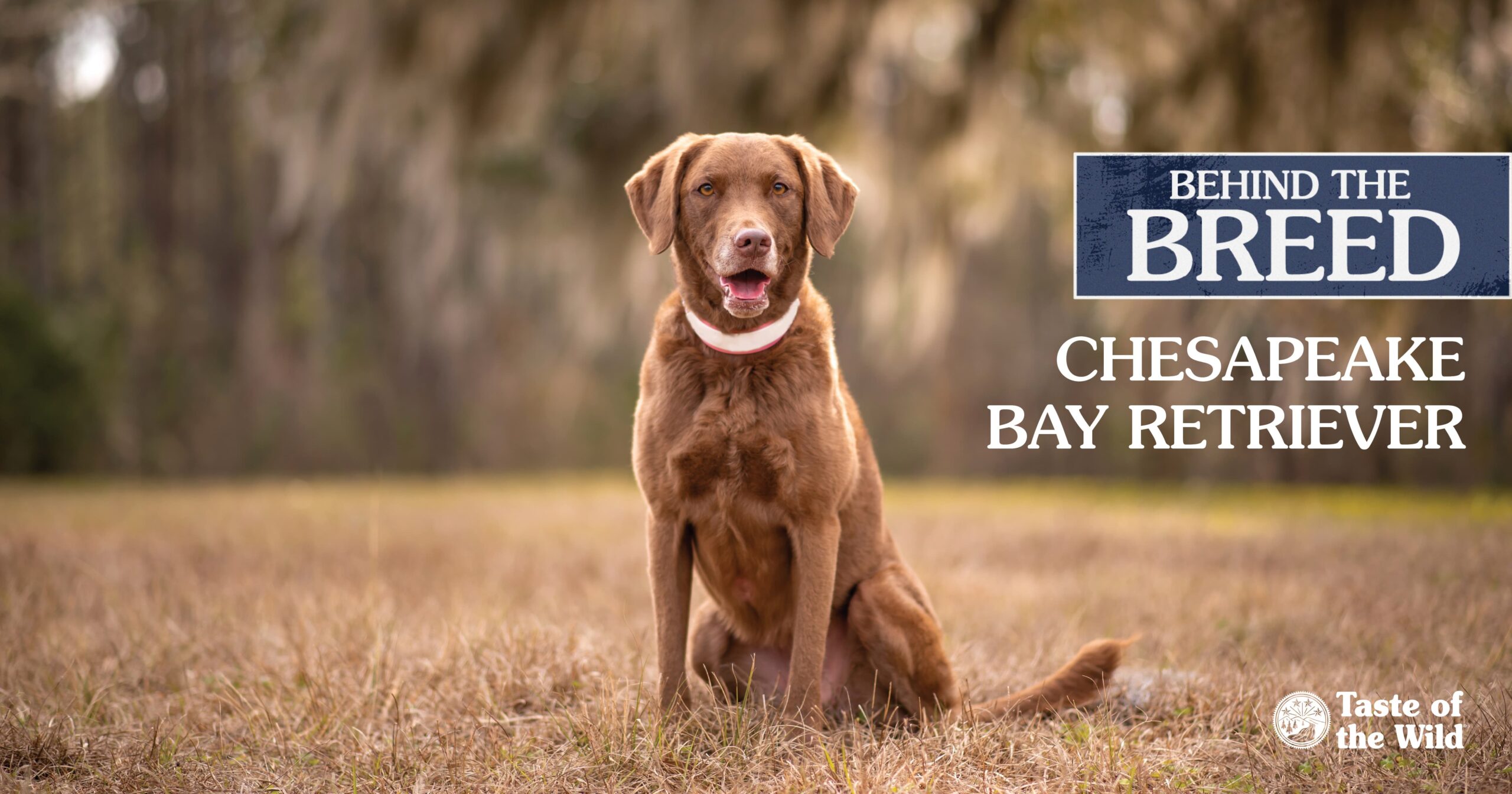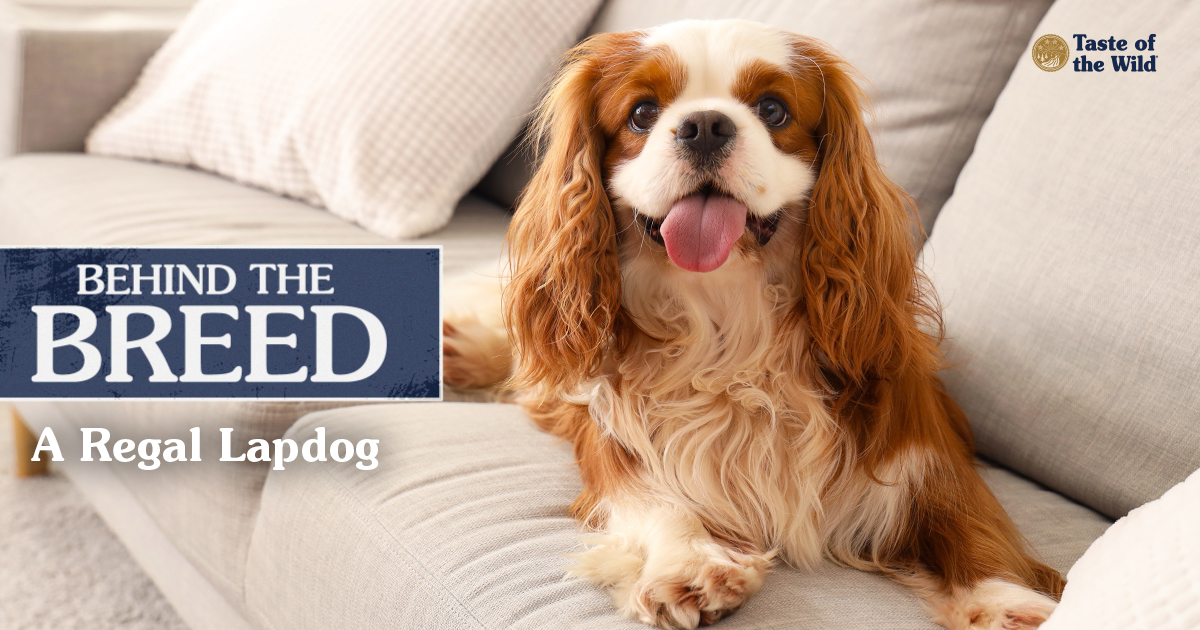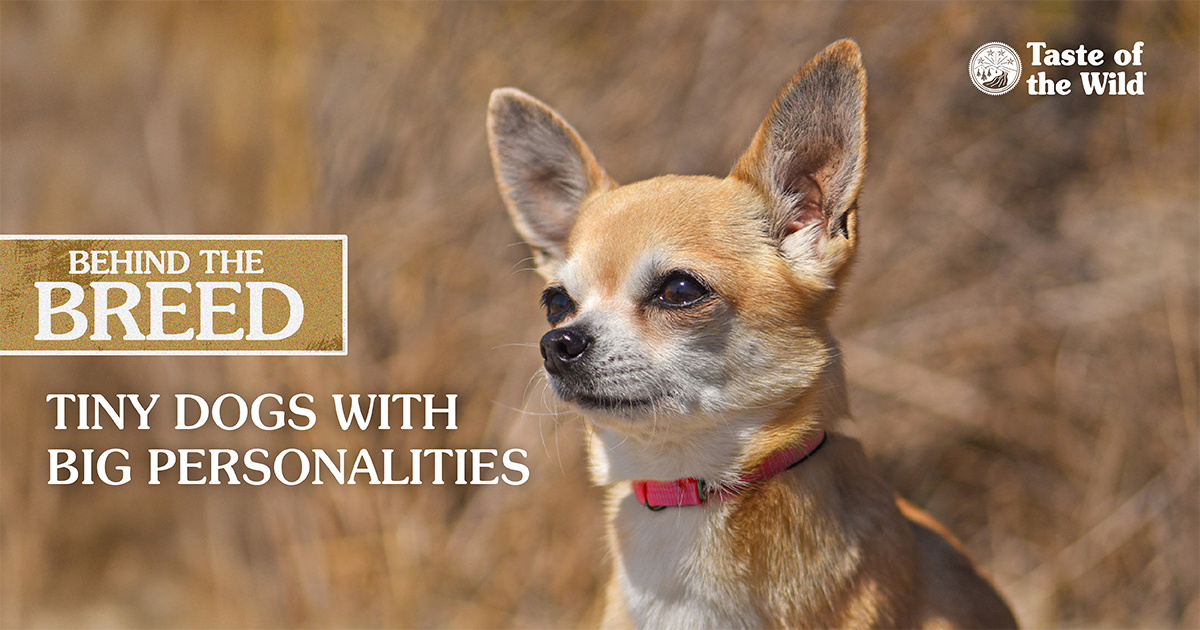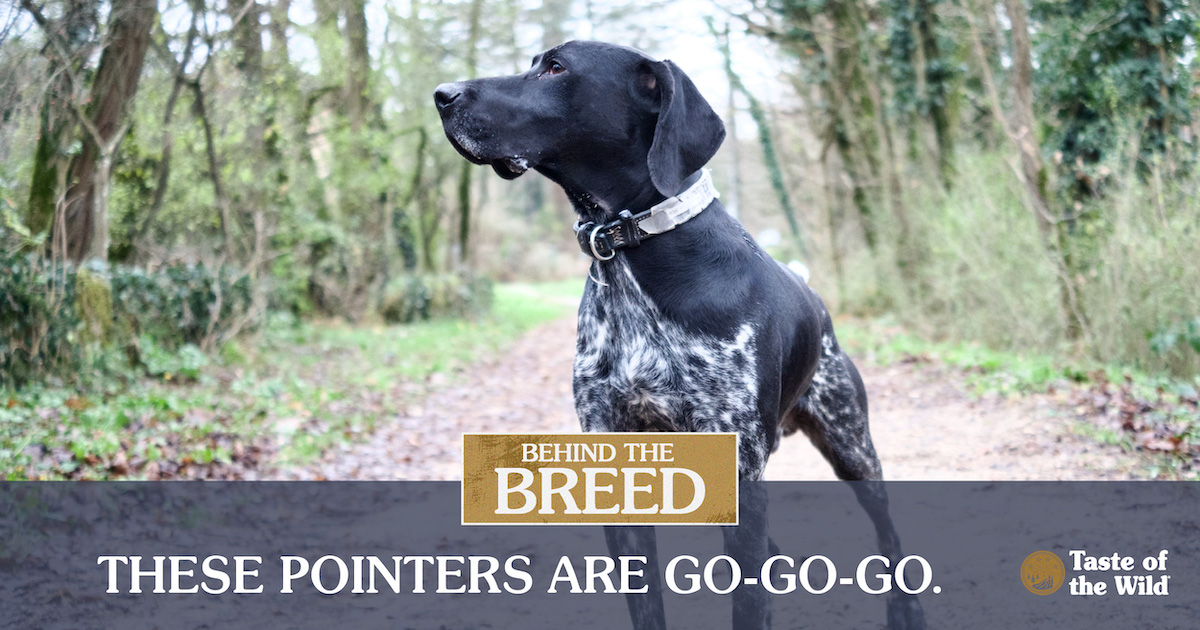Behind the Breed: Chesapeake Bay Retriever
Thursday, May 25, 2023 | Behind the Breed

Every dog breed came from somewhere. Most of the breeds we’ve discussed in our Behind the Breed series originated in Europe before ending up as beloved American dogs. But the Chesapeake Bay retriever? An American breed through and through.
Chesapeake Bay Retriever History
Although “retriever” is in their name, Chesapeake Bay retrievers aren’t related to other retriever dog breeds, like golden retrievers or Labrador retrievers. The Chesapeake Bay retriever was truly “made in America.”
According to an account posted by the American Chesapeake Club, a man named George Law rescued two pups from a ship that was sinking in the, you guessed it, Chesapeake Bay of Maryland in 1807. The pups were unrelated but of Newfoundland descent.
The dogs, a black female and a “dingy red” male, proved to be great water dogs with natural duck hunting instincts. They were sold off to separate parties but their offspring became the bones of the Chesapeake Bay retriever breed as we know it today.
One of the Popular Retriever Breeds
Today, the Chesapeake Bay retriever (or Chessie) is a favorite hunting and outdoor sports dog, but they also make good family pets due to their calm temperament and willingness to train. They’re solid dogs, weighing up to 80 pounds while reaching more than two feet tall at the shoulder. Their large size means that when a Chesapeake Bay retriever leans on you for scratchies, you know it!
Chesapeake Bay Retriever Colors
Though they’re most famous for their red, rusty color, Chesapeake Bay retrievers can be chocolatey brown or a tan/straw color known as deadgrass — an interesting way to describe the color of a Chessie!
Chesapeake Bay Retriever Lifespan
A typical Chesapeake Bay retriever will live for around 10 to 12 years. Regular veterinary checkups can help detect any health issues early on and keep your Chessie healthy well into their senior years. Adopting a puppy from a reputable breeder who screens for health issues will also help ensure you come home with a healthy pup.
Do Chesapeake Bay Retrievers Shed?
Like other dogs, Chessies do shed, but their short hair doesn’t need much attention. For most dogs, a regular grooming session once a week will be all they need. If you find a hair mat, hold the hair between the skin and the mat, and using a metal comb, start on the outside and gently pick the mat apart, working toward the center. It may seem like a quick solution, but you should avoid using scissors to cut the mat out because you might accidentally cut your dog’s skin.
A Waterproof Coat Comes in Handy
Possibly the most unique thing about the Chesapeake Bay retriever breed is their waterproof coat. Bred to hunt ducks and other waterfowl on the Chesapeake Bay, the dogs needed to be able to withstand fearsome weather and frigid water. The inner layer of their double coat is thick enough to prevent water from getting to the skin, and the short outer coat prevents snags from reeds or burrs. Both coats produce natural oils that repel water. Chesapeake Bay retrievers also have webbed feet for maximum efficiency when swimming after downed prey.
The Chesapeake Bay Retriever Personality
Like other dogs in the sporting group category, Chesapeake Bay retrievers handle obedience training well, but that doesn’t mean they’re simple dogs to have around the house. They are high-energy dogs who have minds (and noses) of their own and often decide to do what they want to do, especially if they catch a scent.
You will need to provide your canine companion with activities for both mental stimulation and physical exercise to avoid having a mischievous dog on your hands. Dog sports, like agility, tracking and dock diving, can be a good option to provide Chesapeake Bay retrievers with physical and mental exercise. Given their waterfowl-retrieving background, swimming is another great option for Chessies to burn some energy!
Otherwise, Chesapeake Bay retrievers are loyal companions and perfect dogs for active owners who love the great outdoors. Their heightened senses make for diligent guard dogs, and they are inherently protective of their owners, much to the detriment of strangers at times.
Like all puppies, Chesapeake Bay retriever puppies should be socialized from a young age and attend puppy training classes. This will help them to know how to behave around other dogs and people, and to become confident and well-behaved adult dogs.
The Chesapeake Bay Retriever Breed Loves to Work
Their heightened senses and endless energy come in handy when Chesapeake Bay retrievers have working dog jobs. Chesapeake Bay retrievers have been known to make comforting therapy dogs and scent hounds who can hold all manner of positions, from disease sensing to search and rescue missions.
Is a Chesapeake Bay Retriever the Breed for You?
These intelligent, high-energy, loyal but somewhat stubborn dogs are perfect for active families who have the time to exercise their Chesapeake Bay retriever’s mind and body. Especially if you live near water — they love to swim!
Chesapeake Bay Retriever Fun Facts
- The breed was “established” in 1884, when the American Kennel Club was founded.
- The Chesapeake Bay retriever was named the official dog of Maryland in 1964.
- The University of Maryland–Baltimore County chose the Chesapeake Bay retriever as the school’s athletic mascot, and a cartoon version named True Grit is on all team logos.
- President Teddy Roosevelt’s prized pet was a Chesapeake Bay retriever named Sailor Boy.
The information in this blog has been developed with our veterinarian and is designed to help educate pet parents. If you have questions or concerns about your pet’s health or nutrition, please talk with your veterinarian.




